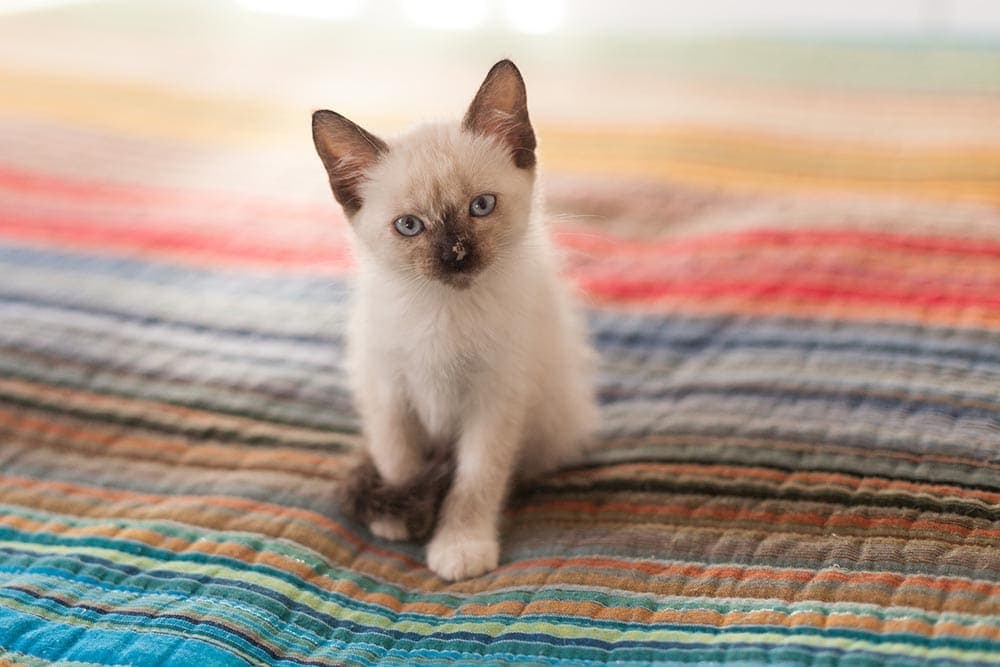Why Is My Cat Losing Hair on Their Tail: 10 Possible Reasons

Updated on
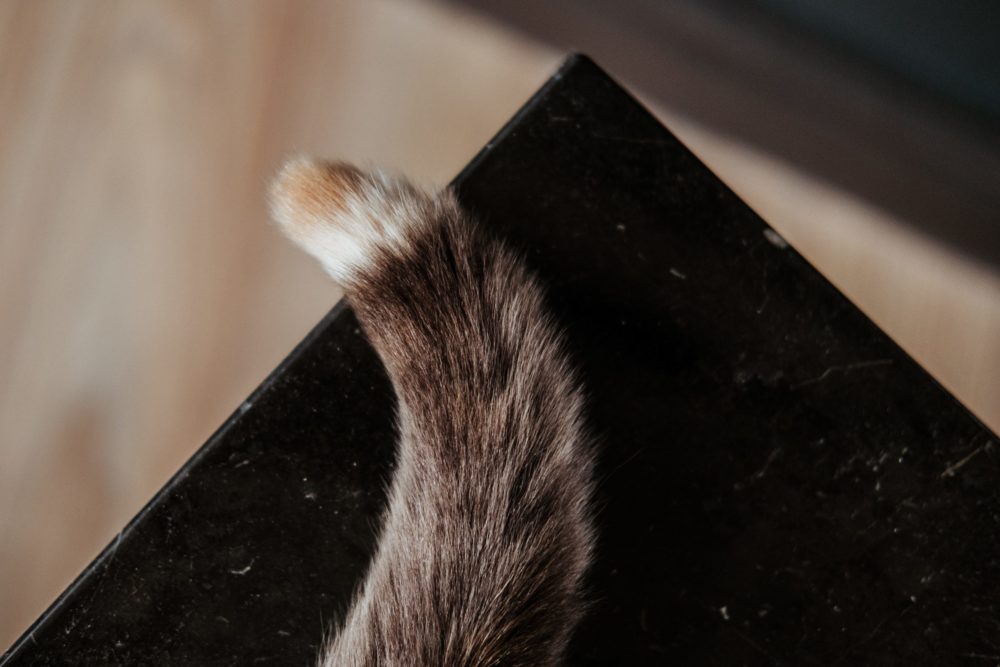
It can be alarming to discover that your cat’s usually thick, luscious fur seems to have a bald patch. It can be even more perplexing to find that this patch is seemingly only on their tail, especially if you haven’t noticed any changes in their behavior. Cats are secretive creatures and often hide any causes of illness or injury from their owners.
Hair loss can sometimes be missed until a significant amount has been lost, resulting in a rather unsightly bald patch. This article will examine 10 reasons your cat might be losing hair on their tail and what you can do to prevent further hair loss.
The 10 Possible Reasons Why Is Your Cat Is Losing Hair on Their Tail
1. Fleas or Other Parasites
The number one cause of cats losing fur at the base of their tail is a parasitic infestation. Fleas can irritate cats, particularly if they have an allergic reaction to their saliva, causing them to itch and over-groom the area. This can cause more damage to the skin underneath the fur, resulting in unsightly scabs and loss. Sometimes the hair loss can be minimal, with a coin size piece missing. Other times, a large amount of fur spanning almost half of the back can occur, but that is an extreme example.
Watching your cat’s behavior is the key to determining whether or not your cat has fleas. There are other noticeable signs of fleas or other parasite infection, including flea dirt (very small dark brown or red pieces in your cat’s coat) and physically seeing the parasites themselves.
Treating your cat for a parasite infestation using topical treatment prescribed by your vet is the key to managing this hair loss. If they are very distressed and itching, your vet may prescribe a short course of steroids or an injection to help relieve the itching while the skin heals. This type of hair loss usually does grow back.
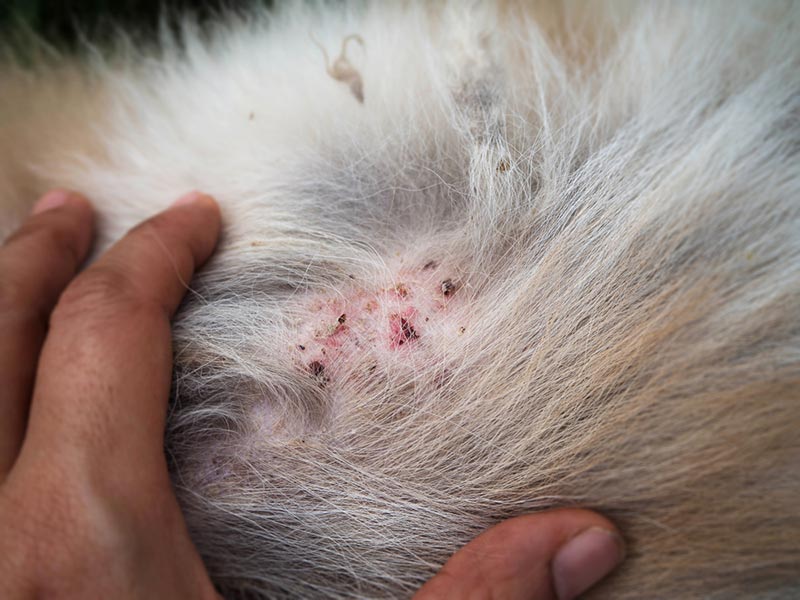
2. Overgrooming
Unfortunately, cats are creatures of habit and can suffer from stress more than other animals. Cats will groom to calm themselves if stressed, but they can escalate this otherwise normal behavior to become obsessive. This can lead to overgrooming and even self-mutilation. So, if you notice your cat obsessively grooming the same area even though it seems to be in discomfort and there have been other signs of anxiety, they may be overgrooming due to stress or anxiety.
You can treat this in several ways, beginning with giving your cat a breathing space to de-stress. Plenty of distractions, including cat toys and scratchers, can also help. It’s essential to make sure that there are enough resources available in a multi-cat household, such as water, food, and litter boxes, to alleviate any territorial or resource-guarding stress your cat may face. Finally, cat-appeasing pheromones can help reduce stress levels in the home. Making sure this overgrooming is treated sooner rather than later is vital. Your cat may become accustomed to this level of over-grooming, causing a recurring issue known as psychogenic alopecia.
3. Allergies
Cats can suffer from allergies to the same common allergens as humans. It may be an allergy to fleas, food, chemicals around the home, or even dust. It can be tricky to pinpoint what exactly is causing an allergy, but they often manifest in skin issues such as itchiness and hair loss, as well as gastrointestinal issues. In addition, bald patches caused by allergies are often accompanied by other signs like itchiness, so taking your cat to the vet and explaining their symptoms is the best course of action.
There are several treatments for allergies in cats, including management with medication such as low-dose steroids, as well as dietary management if it is a suspected food allergy. Hydrolyzed proteins or novel protein diets are the best dietary management methods; your vet can create a diet plan. There are tests available to help you identify what exactly could be causing the allergic reaction in your cat, but these are usually costly. Check with your veterinarian and insurance provider to see if they cover allergy tests.
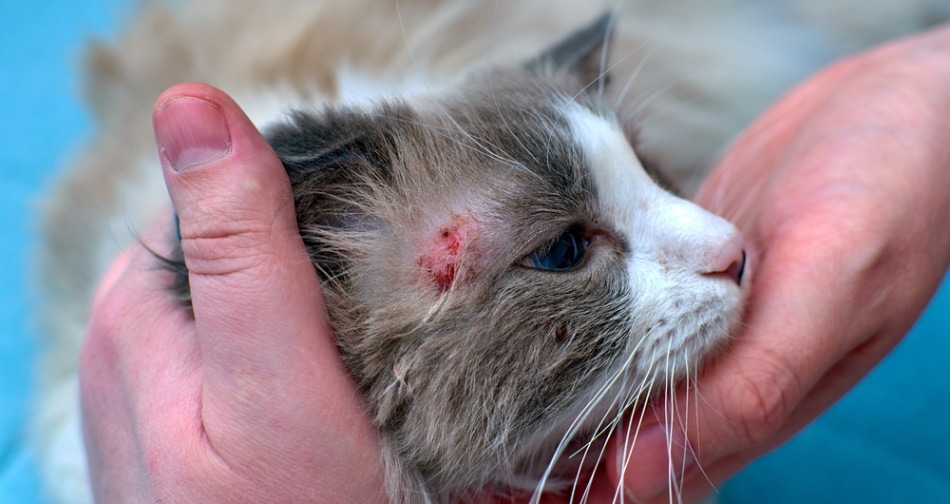
4. Fungal Infection
Fungal infections such as ringworm can cause patches of fur loss on your cat. Ringworm causes round patches of fur loss with a recognizable ring of red skin. Ringworm is highly contagious and zoonotic, meaning it can be spread from your cat to yourself, so good hygiene practices are critical when dealing with a cat with ringworm.
The type of hair loss associated with ringworm can be complete, meaning that the whole area in a circle shape is balding or thinning first. Treatment can be given at the vet’s office, and tests will be used to determine whether ringworm is the culprit for your cat’s tail fur loss.
5. Cat Bite Abscess
Cats are territorial, particularly male unneutered cats. They also have dirty mouths, and unfortunately, they have sharp teeth to fight with. Cat bite abscesses are very commonly found at the base of the tail due to how cats fight. If a cat relinquishes a fight and turns to run away, it’s not uncommon for the chasing cat to bite them around the back and tail area.
Cat bite abscesses are formed by the cat’s sharp teeth puncturing the skin and delivering bacteria from their mouth. Because of the tiny holes that a cat bite can leave in the skin, the surface heals over, trapping any bacteria inside, which can cause infection. The body’s natural defense against the infection produces pus. This pus build-up under the skin forms a bubble or an abscess which can eventually burst, leaving an unsightly hole.
Hair loss is expected with cat bite abscesses; if you suspect your cat has a cat bite abscess, or they seem to be grooming the area more intently or holding their tail at a strange angle, it could be that they’re in pain and need treatment. Taking them to the vet as soon as you suspect is essential, as occasionally abscesses left untreated or drained can turn into a more serious systemic infection that requires antibiotics or even hospitalization.
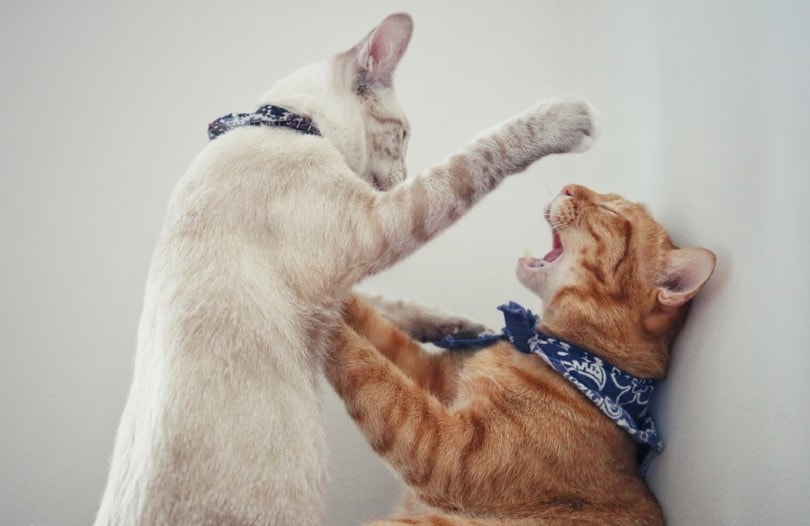
6. Pain
Because cats are stoic, they can easily hide signs of being in pain, sometimes for a long time. Older cats are particularly susceptible to arthritis and are predisposed to joint conditions such as Munchkin cats or Scottish Folds. If a particular area is in pain, such as the base of the tail, this can cause your cat to overgroom it. Other signs of cats being in pain can include:
- Not wanting to partake in physical activity
- Not wanting to move
- Crying
- Behavioral changes
- Disturbed sleep
- Changes in appetite
If you think your cat is in pain at the base of their tail, they may be injured, or if they’re older, they may be suffering from arthritis. Take them to the vet as soon as possible, as many options for pain relief could stop the over-grooming.
7. Thyroid Problems

Cats are prone to a condition known as hyperthyroidism. It is a disease where the thyroid gland (a butterfly-shaped gland in the front of the neck) malfunctions and begins to overproduce thyroid hormones such as liothyronine and thyroxine. Overproduction of these hormones affects many of the body’s processes, including causing thinning hair and bald patches. Other signs of hyperthyroidism in cats include:
- Problems with their kidneys
- Ravenous appetite and weight loss
- Excessive vocalization
It’s very common in older cats, so if you are concerned your cat has a thyroid condition, take them to the vet. It can be treated in various ways, including medication and surgery. Once the underlying thyroid problem is treated, the symptoms should subside, and your cat’s fur should grow back over the bald spot.
8. Injuries or Scars
If your cat is a known scrapper or has had surgery that resulted in scars, it may have scar tissue over the area, which has caused permanent fur loss. This is because scar tissue fundamentally differs from normal skin cells and tissues. If hair follicles are destroyed, they cannot grow back, meaning they will be a permanent site of baldness. This will likely not upset the cat and shouldn’t irritate them. However, if you have any concerns, it’s worth taking them to the vet to check that everything has healed correctly.
9. Genetic Conditions
Some cats will be born with congenital conditions predisposing them to hair loss. These conditions are more common in some breeds, such as Burmese, Siamese, and Devon Rex, and are caused by inherited genes or ones that have spontaneously mutated.
For example, a kitten may be born with thinning fur that gets thinner as they get older, but this usually causes a larger area of hair loss rather than being concentrated on the tail area. Taking them to the vet and having them checked over is the best way to determine whether a genetic condition is the cause of a cat’s fur loss or if it is something more sinister that can potentially be treated.

10. Cancer
Lastly, there is a cancer called feline paraneoplastic alopecia, in which patches of hair fall out completely, causing bald spots. The skin may also show lesions and peeling, and other symptoms are associated with the condition, including dryness, decreased appetite, and painful cracks on the pads of the paws.
Usually, most of the cat’s body is affected, but only the base of the tail may be affected. The links between cancer and feline paraneoplastic alopecia aren’t well understood, but there are some trends that veterinarians have discovered. For example, pancreatic cancer is more likely to have this type of alopecia as a sign.
 Final Thoughts
Final Thoughts
A cat may lose fur on their tail for many reasons, but most are easily treated. Sometimes, a cat experiencing alopecia of the tail is bothered by parasites such as fleas and mites, or other skin irritations, causing them to over-groom.
Luckily, the hair often grows back in these situations. However, if you are concerned about your cat’s hair loss, taking them to the veterinarian as soon as possible is key to reducing any long-lasting damage to the coat and skin.
Featured Image Credit: Anete Lusina, Pexels

